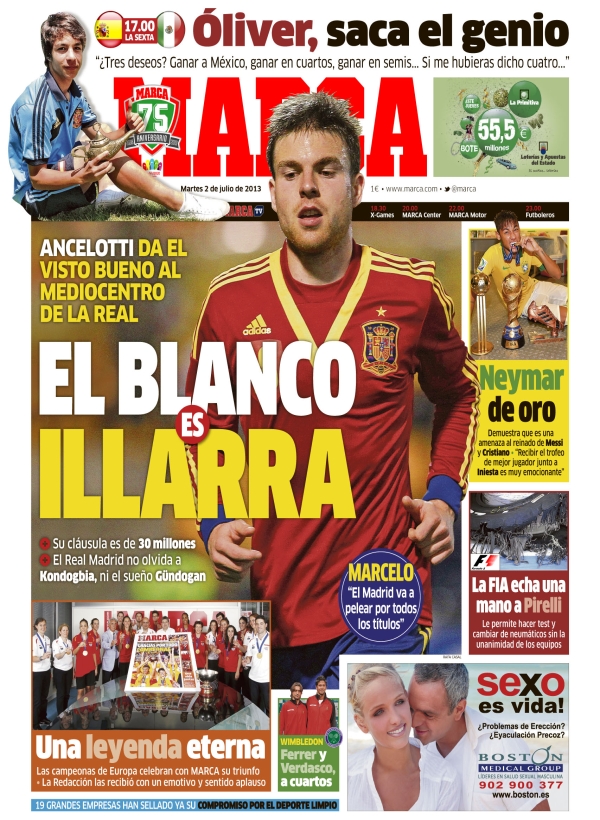Carlo Ancelotti will be like a breath of fresh air at Real Madrid
The Italian's easygoing nature extends to tactics – from Parma to PSG he has learned to change according to circumstance
Perhaps Carlo Ancelotti's greatest gift as a coach is his affability. He desperately wants to succeed but he recognises there are things in life other than football – such as food, even if he is rather slimmer now than he once was. His years at Milan under Silvio Berlusconi and at Chelsea under Roman Abramovich passed without ructions with owners noted for interfering. He even managed to cool a developing (on one side at least) feud with José Mourinho by suggesting they simply pack it in. After the sulphurous reign of Mourinho, his breezy pleasantness will be a cleansing blast at the Bernabéu. Real Madrid can be a strange place politically but if there is any top manager equipped to handle the internal pressures, it is Ancelotti, a man seemingly able to face down most situations with a raise of his famous eyebrow (according to the journalist Sheridan Bird, the effect is the result of limited movement caused by an elbow in the face from Marco Tardelli). His easygoing nature extends to tactics. Ancelotti may be inclined to the 4-3-2-1 on which he wrote his coaching dissertation at Coverciano but he will change according to circumstance – a lesson he learned at Parma, his first job in management. Then, he admits, he was too wedded to the 4-4-2 he had learned under Arrigo Sacchi at Milan. That he had learned it, even, said much for his character and his willingness to learn. Ancelotti arrived from Roma aged 28 and took time to adapt. "He struggled at first," Sacchi said. "Berlusconi said we had an orchestra director who couldn't read sheet music. I told him I would teach him to sing in tune with our orchestra. Every day, I would make him come an hour before training with some kids from the youth team and we would go through everything. Eventually he sang in perfect tune." At Parma, Ancelotti insisted on playing that way, even though that meant Gianfranco Zola playing on the left wing until he decided to move to Chelsea. It also meant he missed out on the chance to sign Roberto Baggio, who was keen to leave Milan, but wanted to play behind the front two rather than compete with Hernan Crespo and Enrico Chiesa for one of the two striking berths and so joined Bologna instead. Now, Ancellotti insists, he would be more flexible, would find a way to accommodate a talent like Baggio's. "I lost a great opportunity to improve the team with the ability of Baggio," he said. "But that was a lack of experience. I had been a coach just two years. I didn't have the knowledge to know I could change things. And maybe I was a little bit scared to change because it was the start of my career." He proved that in his second coaching job, at Juventus, where he switched to a back three, playing 3-4-1-2 to accommodate Zinedine Zidane behind a front two. At Milan, it was fairly obvious Ancelotti wanted to play a 4-3-2-1 but when the order came from Berlusconi to use two central strikers, he demurred and ended up playing 4-3-1-2 slightly more than twice as often in Serie A as he did his preferred style. At Chelsea, he tried to operate with a diamond in midfield but, realising that Frank Lampard is better with the ball in front of him than playing with his back to goal, soon adapted, using Deco or Joe Cole in the role before switching back to a shape that varied between 4-3-2-1 and 4-3-3. In Zlatan Ibrahimovic, Ancelotti found the idea front man for his 4-3-2-1 at Paris Saint-Germain, with Ezequiel Lavezzi, Jérémy Ménez, Nenê and Javier Pastore playing off him. Even then, he was prepared to change to 4-4-2 when the occasion demanded it. It is hard to imagine Ancelotti changing much in his first weeks at Madrid – although much, of course, depends on who they sign. It's certainly possible to imagine a 4-3-2-1 with Karim Benzema at the peak, with Cristiano Ronaldo and Mesut Ozil tucked behind in what would effectively be free roles, and a three of Xabi Alonso, Sami Khedira and Luka Modric providing the platform. Or perhaps Angel di María could be used a little deeper than previously – as Pastore was often used at PSG – as a creative player who starts deep and then advances. More likely, especially with Isco set to join and another forward likely, is that the 4-2-3-1 will remain. It's a system that allows the use of four creative players, plus at least one attacking full-back and a player who can advance from deep and so fits a squad who are both heavy on attacking players, the inclinations of the president Florentino Pérez and the way Madrid need to play in a league in which they are expected to win the vast majority of their games. The one problem is that Ancelotti has used a 4-2-3-1 in just 3% of the league games in which he has been coach since taking over at Juventus in 1999. For a manager so undogmatic it probably isn't an issue but it does seem he has been appointed more for his personality than because his natural tactical philosophy is a fit with the players in the squad. wrote:
 but still a huge improvement over Sami. Now he's just scored the go ahead goal against Brazil on a header from a corner.
but still a huge improvement over Sami. Now he's just scored the go ahead goal against Brazil on a header from a corner. 






 i call it the real madrid bonus
i call it the real madrid bonus